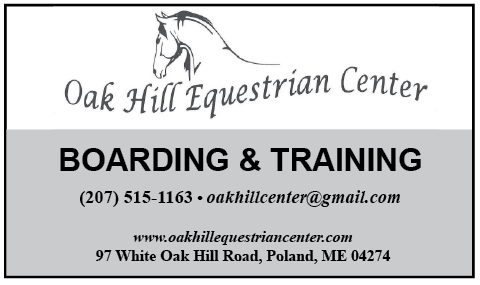By: Linda Veblen
Prime Time Riders had a wonderful meeting Oct. 12th at Welcome Home Farm in Greene, ME. Asa Woodman presented an introduction to Harmony Horsemanship.
For more information about Harmony Horsemanship, see this link:
http://www.harmonyhorsemanship.ca/
Asa is a Licensed Marriage and Family Therapist. She uses the horses to help people overcome fear and trauma. To see more about her work follow this link:
https://www.healthaffiliatesmaine.com/counselors/asa-gustavsson-lmft/
We started the clinic inside with introductions and a brief introduction to the theory of HH.
Respect and Safety are the important aspect of horsemanship. The Harmony Horsemanship theory was developed by observing horse behavior in the herd. Horses in the herd will not cross the “drive lines” of the lead horse. In working with our horses, we need to be aware of what it means to cross these drive lines in establishing communication. For example, the horses in a herd will occasionally back-up; the lead horse will never back up. The herd is showing respect for the lead horse.
Developing a close relationship with your horse does not include “cuddling”. The horse must be taught to respect your space.
A calm connection is the second premise of Harmony Horsemanship. The rider is the leader and the reaction you get from the horse matters. Developing communication with the frontal lobe of the horses brain, along pathways that develop over time by repetition, will help prevent a panic (fight or flight) reaction.
The Harmony Horsemanship method helps the rider get to a “yes” horse, a willing horse, rather than a “no” response horse. Asa suggested we read more about horse physiology. Two good resources are: Chris Erwin’s Evolution of Horsemanship https://chrisirwin.com/horsemanship/ and Dr. Stephen Peter’s site: https://www.evidence-basedhorsemanship.com/
Ground Work: The first exercise Asa introduced was walking the square. We used a halter and lead rope to establish boundaries. Walking a square with the horse is a relaxing exercise that can help establish the boundaries. Repeated many times the square helps to bring the horse to a relaxed state. The repetition of the square helps to reinforce the idea that the rider and horse are a team and trust is in the leader (rider) is established.
The second exercise was walking the “S” shape and drawing the horse toward you on each turn. Again, this exercise repeated many times as a way of establishing a calming routine. Asa then added the “scary object” to practice getting the horse to overcome its fear of “the noisy plastic bag” or whatever might be encountered on the trail. The rider continued to make squares and “S” shapes to calm the horse. Reverting to a familiar routine is calming as demonstrated very well by the riders on the ground.
The mounted exercises: The now familiar exercises of “square” and “S” were helpful for each of the five riders. A lot of time and patience were required. Repeating the figures encouraged calmness. All participants gained good tools to use with their own horses and fun was had by all.
For those interested in joining our group,
the Prime Time Riders,
please contact Linda Veblen
lveblen@jhu.edu,
443-992-3833
for information and schedule.





